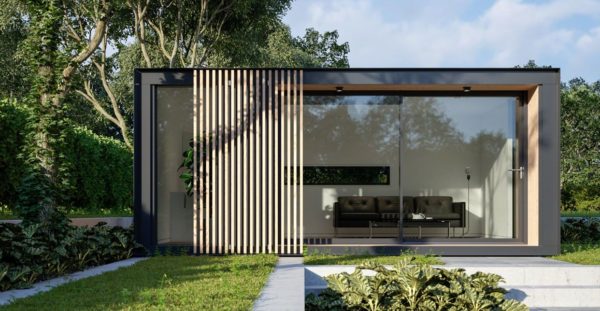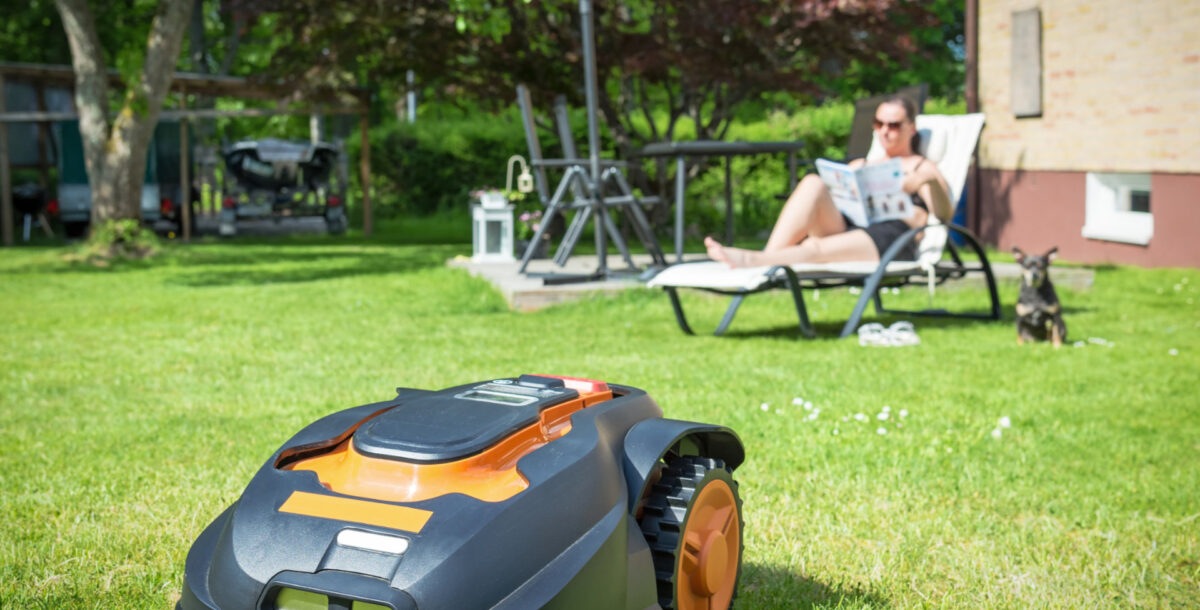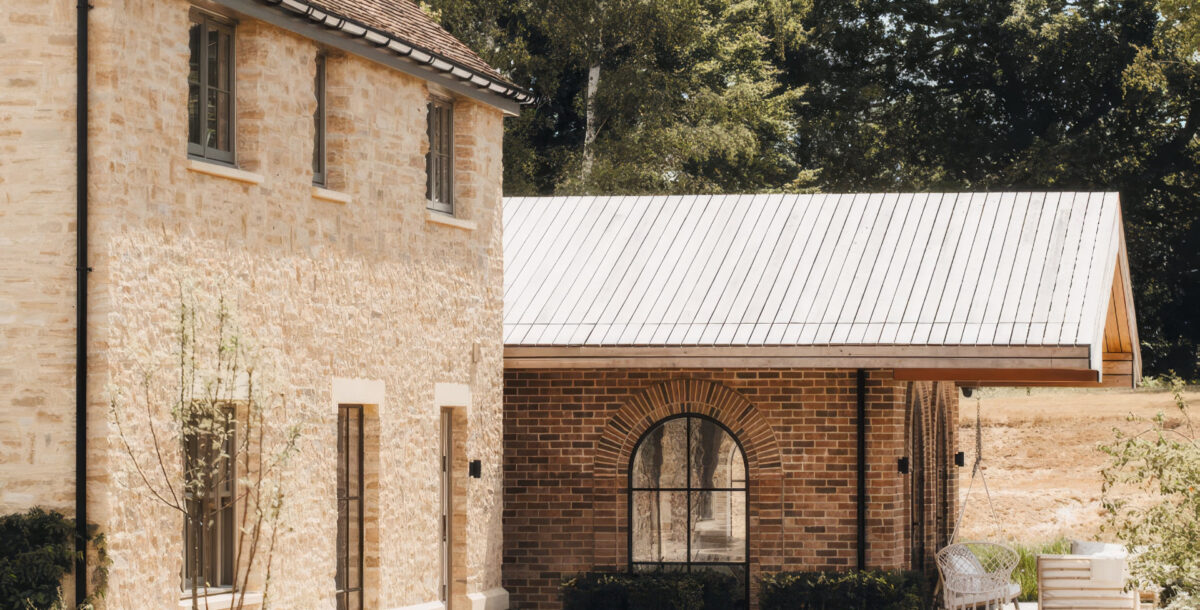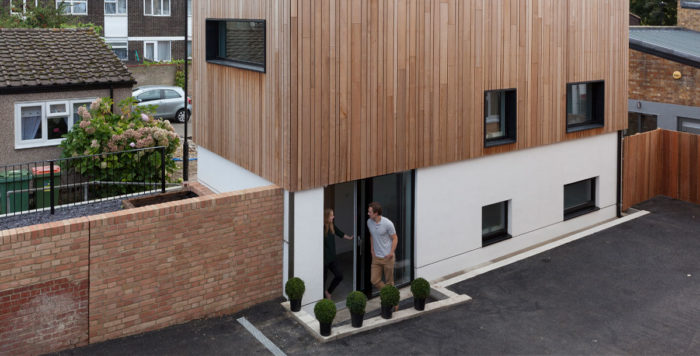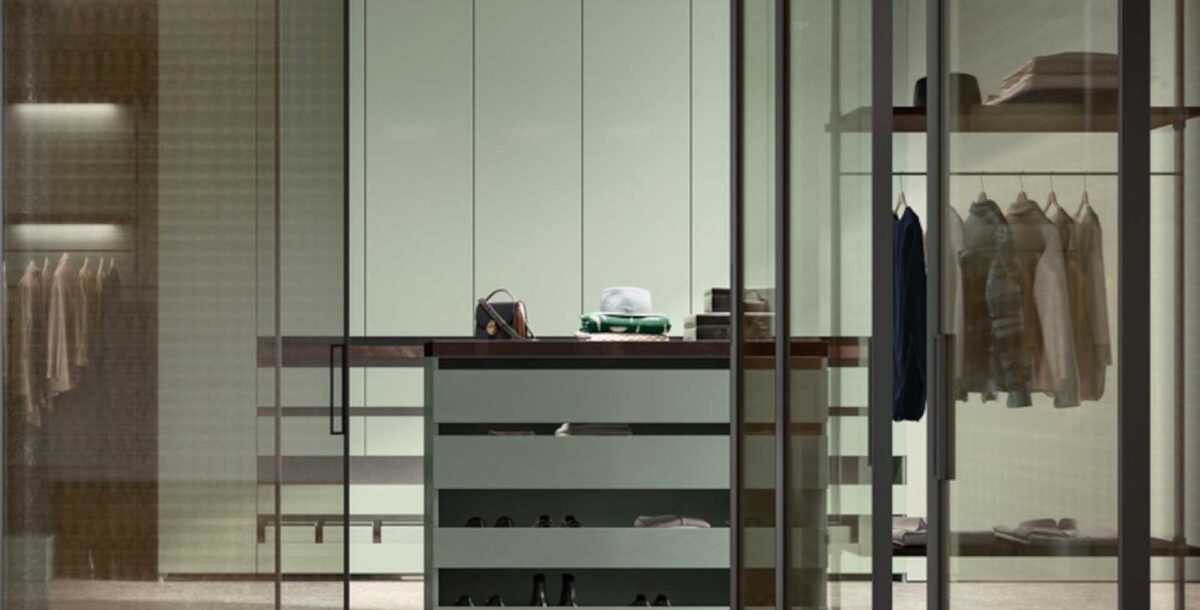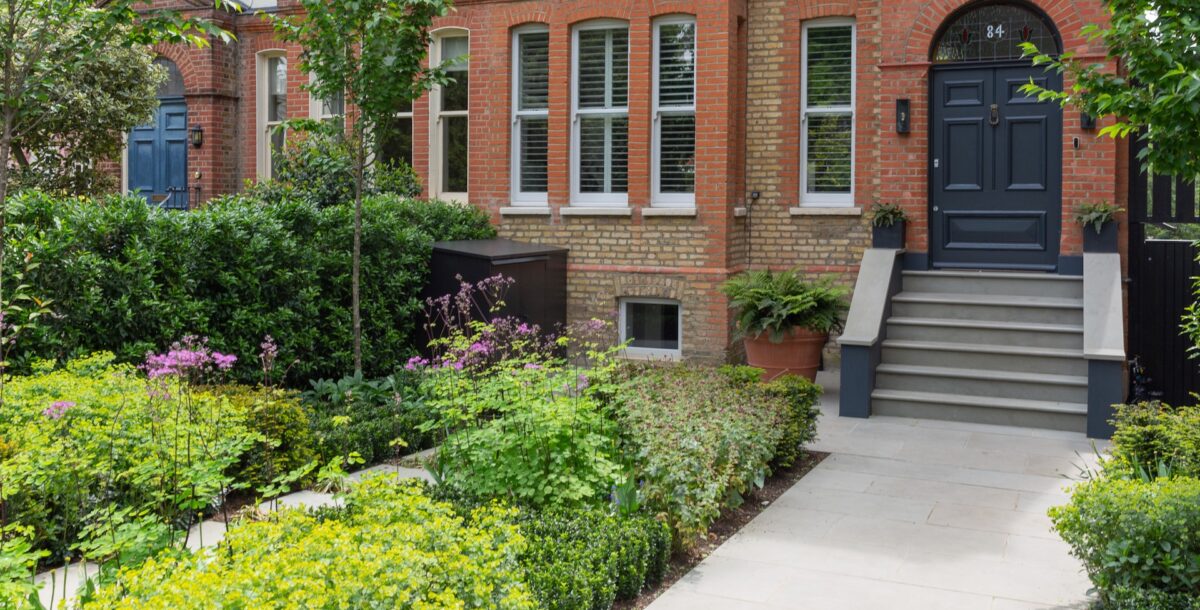Front garden ideas that will elevate your entrance
Your rear garden may be your prime entertaining space, but it's your front garden that makes the biggest first impression – here's how to get it right
Whether they’re a tiny strip of concrete, an extended parking space or a rolling stretch of lawn, our front gardens have one thing in common – they are the first impression you and your visitors have of your home. Yet sometimes they can feel like an afterthought compared our more private rear gardens, which often serve as our main outdoor entertaining spaces. But why are we giving our front gardens short shrift?
“A front garden can be anything you want it to be,” garden designer and RHS Chelsea Gold medalist Ann-Marie Powell tells us. “Whether you want it to be a wildlife sanctuary with a pond and wildflowers, a Japanese-inspired zen garden or a traditional English rose garden, the only barrier to success is your imagination.”
“I’ve seen and designed front gardens that are used for almost everything,” she says. “For example, you might find that it’s the perfect place to grow vegetables or herbs. You should also remember that, unlike your rear garden, it’s a space you’re almost guaranteed to walk through every day, so it’s important that it welcomes you home, or gives you a boost as you step out of the front door.”
Granted, your front garden might have to serve a particular purpose. If parking is an issue in your street, for example, it might need to be a home to cars as well as plants, via a well-designed driveway. And then there’s that perennial issue – what to do about the bins? Hopefully our front garden ideas can give you all solutions you need for a space that is both public-facing plot and personal retreat. Whether you’re landscaping a new build or dealing with a period plot.
1. Choose low maintenance, year-round interest
“In a rear garden, we usually recommend 30 per cent ‘evergreen’ planting,” says Ann-Marie Powell. “But in a front garden, we’d push that up to 50 per cent or even more.” That’s partly because she understands her clients don’t necessarily want to be ‘bums up’ in a place where people are passing by all the time. So she suggests lots of low-maintenance and evergreen planting, so you don’t have to be filling in too many gaps with annuals for seasonal colour.
Ann-Marie is a particular fan of grasses and trees. ‘”Grasses are brilliant for yea-round interest, and I love the feel of them as you brush past them. It helps release the stress of a long day,” she says. In the latter category, she loves the Amelanchier lamarckii for its year-round performance, with soft flowers in spring, fruit in summer – edible for both us and visiting wildlife – and flame-orange foliage in autumn.
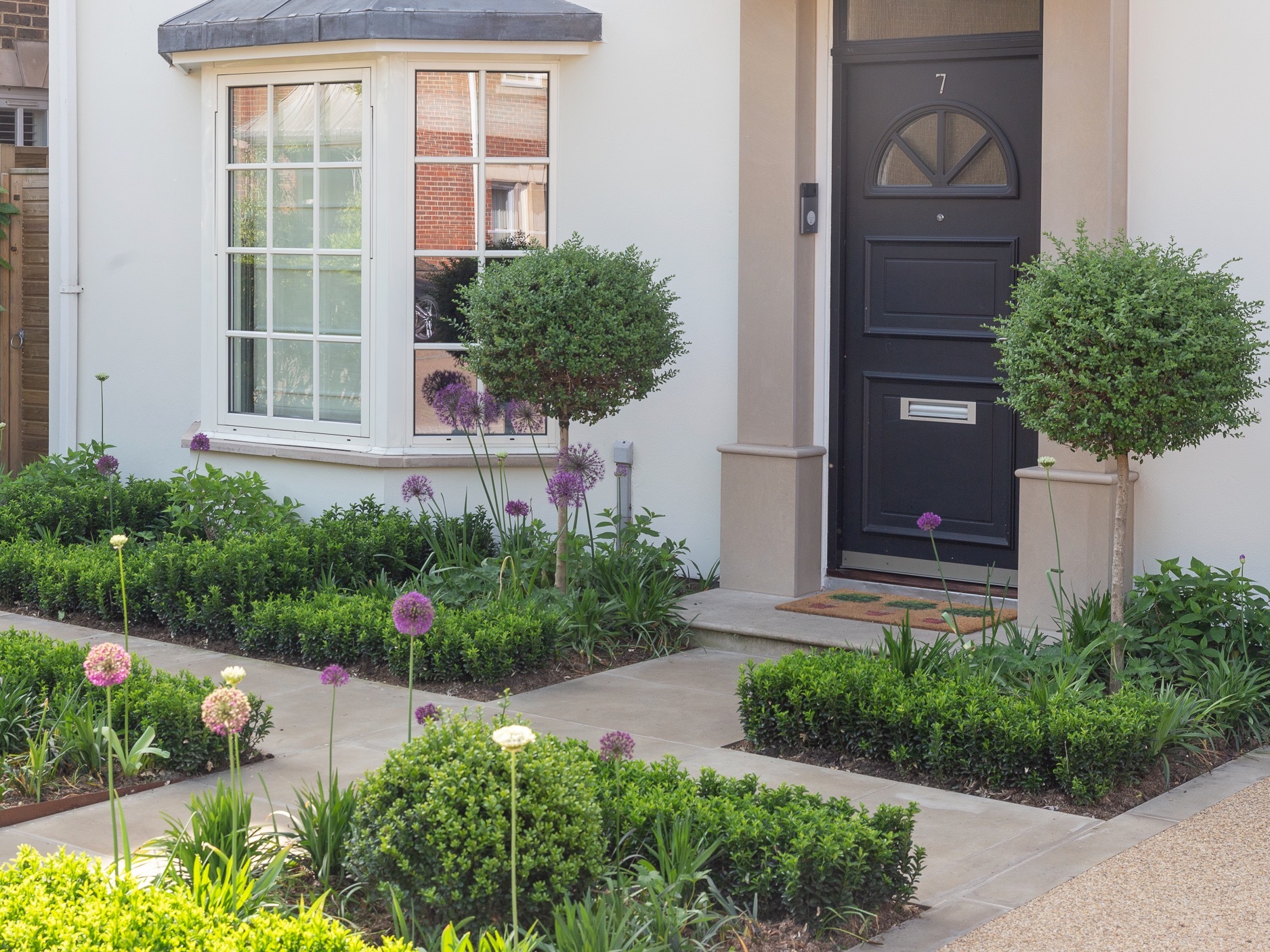
Image credit: Garden designed by Abigail Hazell and landscaped by Belderbos Landscapes
In this garden designed by Abigail Hazell and landscaped by Belderbos Landscapes, simple architectural planting – including the low-level topiary hedge – complements the modern character of the house. Evergreen planting is softened by purple alliums and agapanthus with Cor-Ten metal edging. “A front garden with an evergreen structure like this can be enjoyed all year-round,” says Claire Belderbos.
2. Use planting for privacy
“One of the most important considerations for a front garden is privacy, especially if you have front-facing windows,” says gardener, writer and plant nursery Sarah Raven. “If you have bare walls and fences in your front garden, climbing plants can be used to dress these areas, and easily create seclusion. Hedges also work wonderfully to create a tall border and enclose the area. You should also think about the hardiness of your plants, choosing ones that won’t need much cosseting.”
“If your house is north facing, one of the best climbing plants to grow on a shady wall is Hydrangea anomala subsp. petiolaris. It has beautiful flowers, equally lovely seedheads, and is easily maintained. You should lightly prune to remove dead or damaged stems, but otherwise it can be left to its own devices,” she advises. “If your front garden has sandy soil, you should apply a flowering shrub fertiliser in spring. I just love the abundant flowering of hydrangeas for privacy, and their low maintenance makes them a fantastic choice for front gardens.”
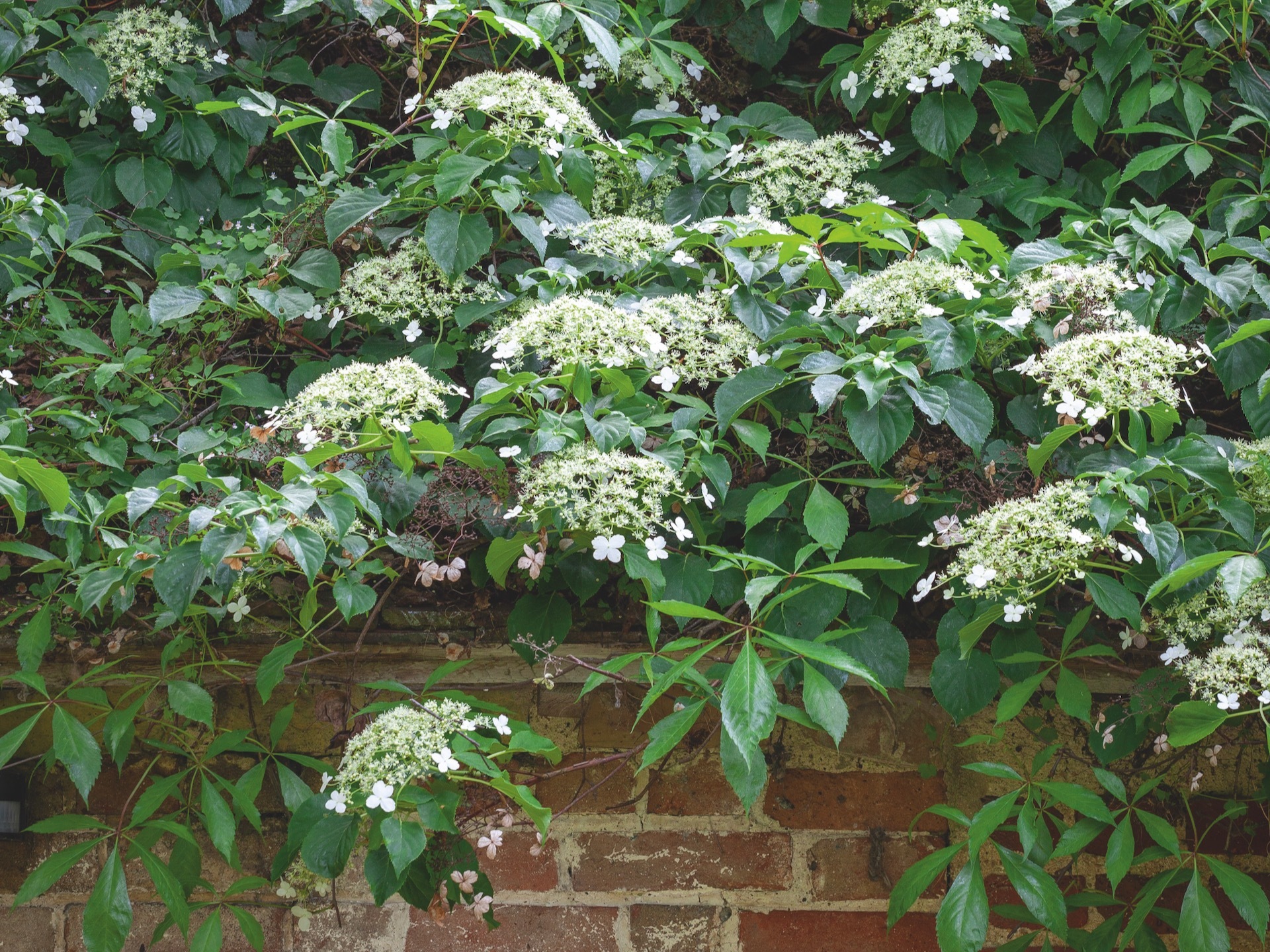
Hydrangea anomala subsp. petiolaris is one of Sarah Raven’s favourite plants for privacy. Image credit: Jonathan Buckley
“A quick-to-grow alternative is Cobaea scandens; a truly fantastic, exotic looking plant with buds in green-white, deepening to purple as they age. It offers great privacy for a front garden, growing up to a second storey window if given a climbing frame. You can plant these as seedlings as they romp up so quickly and may eventually span more than seven meters from a single set of roots. A useful tip to make Cobaea easier to maintain is to train it to grow along a trellis or similar structures.”
3. Plant hedging for protection
“Beech Green hedging is a perfect all-rounder, offering privacy while also brilliantly protecting the garden and house from strong winds,” say Sarah Raven. “You should use five plants per metre length, setting them out in a zigzag to encourage a thick and bushy hedge that is also ideal for visiting birds and pollinators.”
“Hedges can help bring privacy, but also provide a much-needed haven for local wildlife, especially garden birds,” agrees Alexandra Hollingsworth at Dig. “Beech, hawthorn and hazel are all good options for front garden hedging.”

Beech hedging can provide protection for your other plants. Image credit: Sarah Raven/Jonathan Buckley
And if you’re looking for flowering interest, Sarah has the ideal plant. “Jasmine, such as Trachelopspermum is a striking evergreen climber that creates a standout screen effect in many types of gardens. It’s a slow-growing hedge that works best when bought as big as possible, so if you have a larger space in your front garden to work with, this is the perfect choice. This plant thrives in partial shade with well-drained soil and requires a gentle prune to make sure it stays neat and tidy.”
4. Pave the way
In any front garden, chances are you will need a path of some sort that takes you from the road or your drive up to your front door. And the form this takes will be dictated by several factors.
“You’ll need to think about the type of path you may want to lay and where,” says Grazzie Wilson, head of creative at Ca’ Pietra. “For example, if you have a north-facing front garden, then you’ll need to consider a path material that has extra slip resistance as without sun hitting it, it can become extra slippery.”
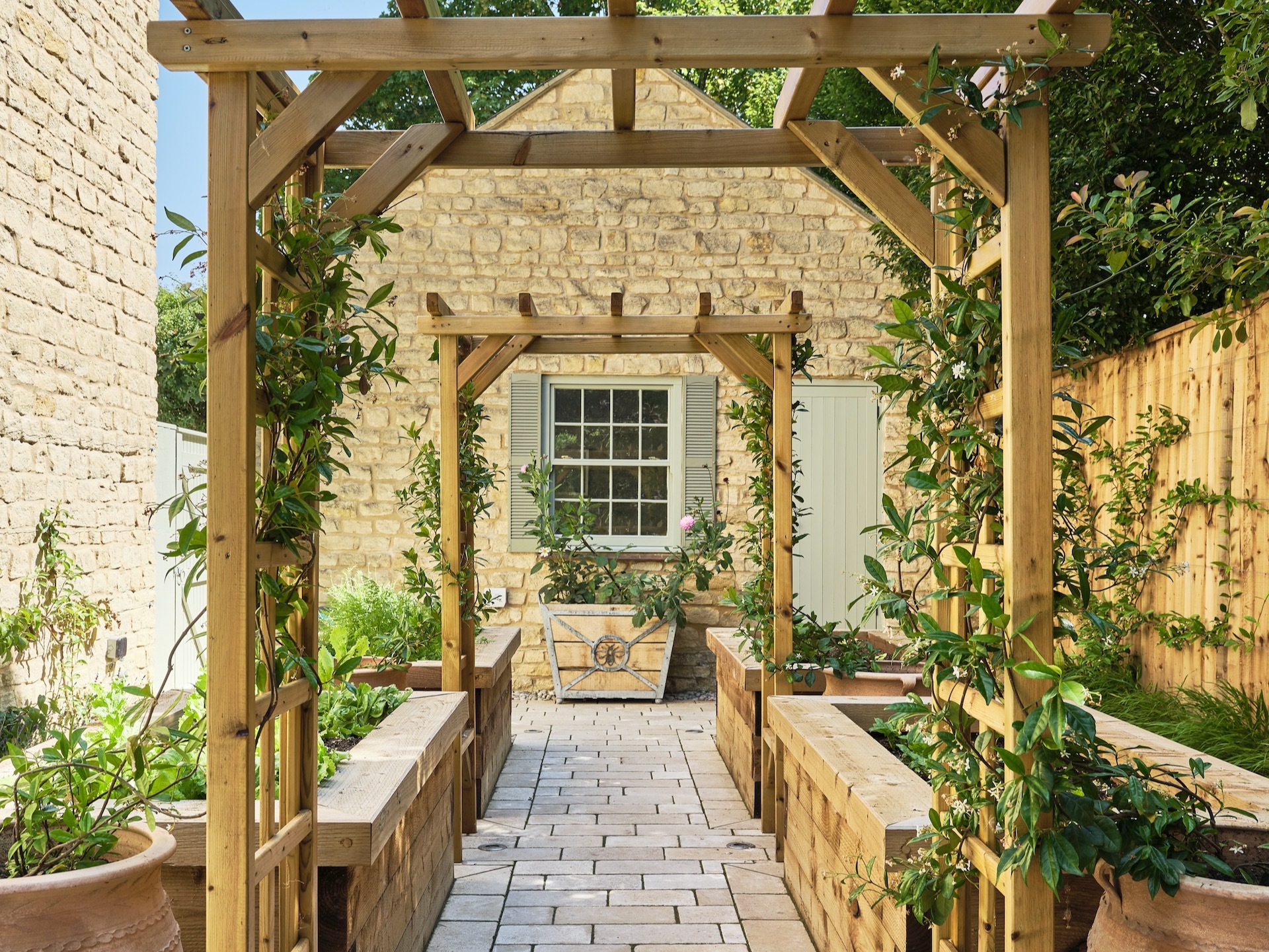
Image credit: Ca’ Pietra
“A north/south front garden will also change how your chosen path material looks, too,” Grazzie continues. “Different lights and brightness can affect the richness of the material, especially if you have decided on a porcelain tile over natural stone. If you do decide on a porcelain tile, be sure to check it is suitable for outside as not all of them are.”
“The other major things to consider is whether your path also serves as a driveway and if cars need to be driven onto it,” says Grazzie. “If so, you’ll need to check that it can cope with the additional weight.”
“Laying a front garden pathway or patio in a herringbone pattern is a perfect way to elongate the smallest of spaces and create an inviting entrance to your home – leading the eye towards the property,” suggests Isabel Fernandez at Quorn Stone. “Our herringbone cobbles or limestone and sandstone cobbles work well for a narrow front garden, and many are suitable for driveways.”
5. Scent up
Small or large, a front garden can benefit hugely from scented flowers. After a long day, they can immediately lift your mood and put you – or your visitors – at ease. Ann-Marie Powell loves to use roses and herbs for scent. Alternatively, you could choose a perennial favourite like lavender.

Image credit: Oxford Garden Design
In this garden by Oxford Garden Design, a formal border of lavender complements the structured landscaping and provides a welcoming and relaxing scent that visitors will brush by and release as they come and go.
6. Add a seat
As Ann-Marie Powell explains, “Front gardens are sociable spaces – possibly even more so than rear gardens, since you will naturally meet and chat to people as they pass by. I always like to incorporate a bench into my front garden designs. Just so there’s somewhere to enjoy the design or where you can invite a neighbour to come sit with you and have a cup of tea and a catch-up. It’s an essential, in my view.”
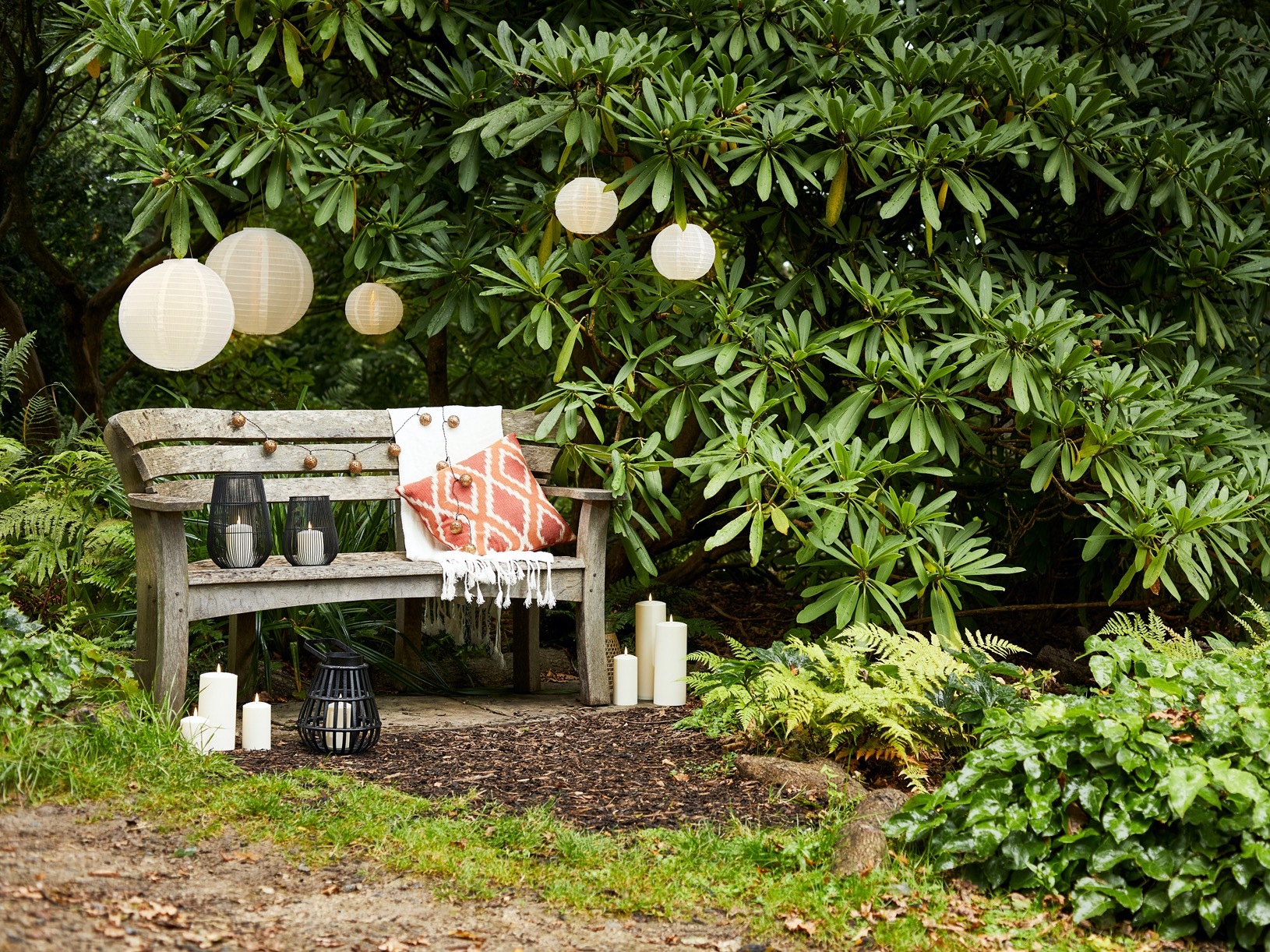
Image credit: Lights4fun
7. Go wild
“Front gardens don’t need to be boring concrete slabs and gravel-filled spaces,” says Dr Ana Attlee, conservation scientist and co-founder of Seedball. “They can be blooming, vibrant areas that you can enjoy, and nature can thrive in. Research shows that even a tiny front garden can house over 700 different species of wildlife. From the miniscule organisms living in the soil, to the nocturnal visitors like hedgehogs and foxes, no space is too small to make a positive impact on local wildlife.”
One of Ana’s favourite approaches is to replace a hard-landscaped drive with a grass one. “By choosing low-lying wildflowers, like white clover, daisies, dandelions, and self-heal, you can create a pretty tapestry effect on your grass drive; not only will this keep the bees and butterflies buzzing, but it also helps reduce the risk of your drive flooding during periods of high rainfall,” she says.” Wildflowers are low maintenance and don’t need a lot of attention to do well, so your driveway will be a hub to support passing pollinators while boosting biodiversity – making it both pretty and practical!”
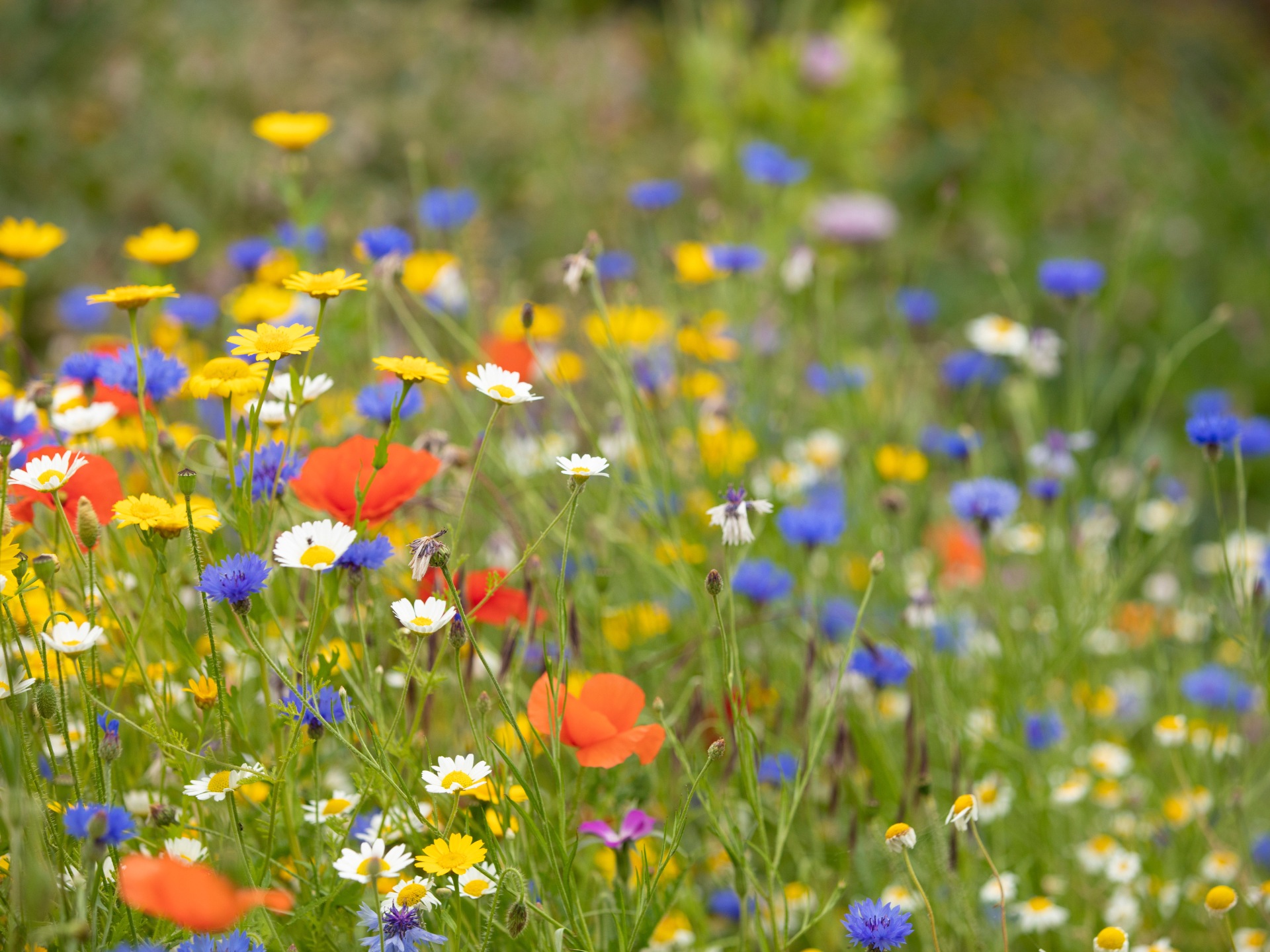
To make creating your designer driveway simple, Seedball has launched Lawn Flowers. This bag of seed ball can simply be scattered on an existing patch of grass. “Each seed ball inside the bag contains up to thirty low-lying wildflower seeds that are ideal for turning boring lawn into a luscious and vibrant green space. Once scattered, you can expect to see delightful daisies, beautiful buttercup, red clover, yellow rattle and many more pollinator-friendly blooms,” says Ana.
“To back wider conservation efforts, for every bag of Lawn Flowers sold, Seedball will donate £1 to the Wildlife Trusts so you can help support biodiversity and home and beyond.”
8. Disguise the bins
Due to access, some of us have no choice but to store our refuse and recycling bins in our front gardens. But they can spoil the look of the space, so what to do with them?
“Bins can be easily concealed from view with stylish enclosures,” says Caroline Milns at architectural design firm Zulufish. “Consider introducing a wooden or metal screen or box that the fits can effortlessly fit into, painted to match the garden’s aesthetic. If you have trellis in the front garden, why not incorporate that around the bin storage which will make the storage much less visible. Similarly, store bikes using a secure bike shed with the same aesthetic to create a harmonious aesthetic.”
9. Shady garden can still be beautiful
North-facing front gardens can be tricky. We’ve already mentioned the issues paving can bring up (above) but planting can also be a minefield due to lack of sunlight. Yet it’s still possible to achieve something beautiful. Designed by Shelley Hugh-Jones and landscaped by Belderbos Landscapes, this carefully zoned garden features key planting includes taxus and euonymus topiary and Portuguese laurel hedging around the perimeter.
However, it’s the shade-loving plants worth paying attention to, such as the mauve Thalictrum ‘Black Stockings’ – a herbaceous perennial with dark purple-black coloured flowering stems, which are topped with fluffy purple flowers during May, June, and July. They thrive in dappled shade, growing to around 4ft tall. Other plants that prefer shady conditions include hellebores, foxgloves, ferns and hostas.
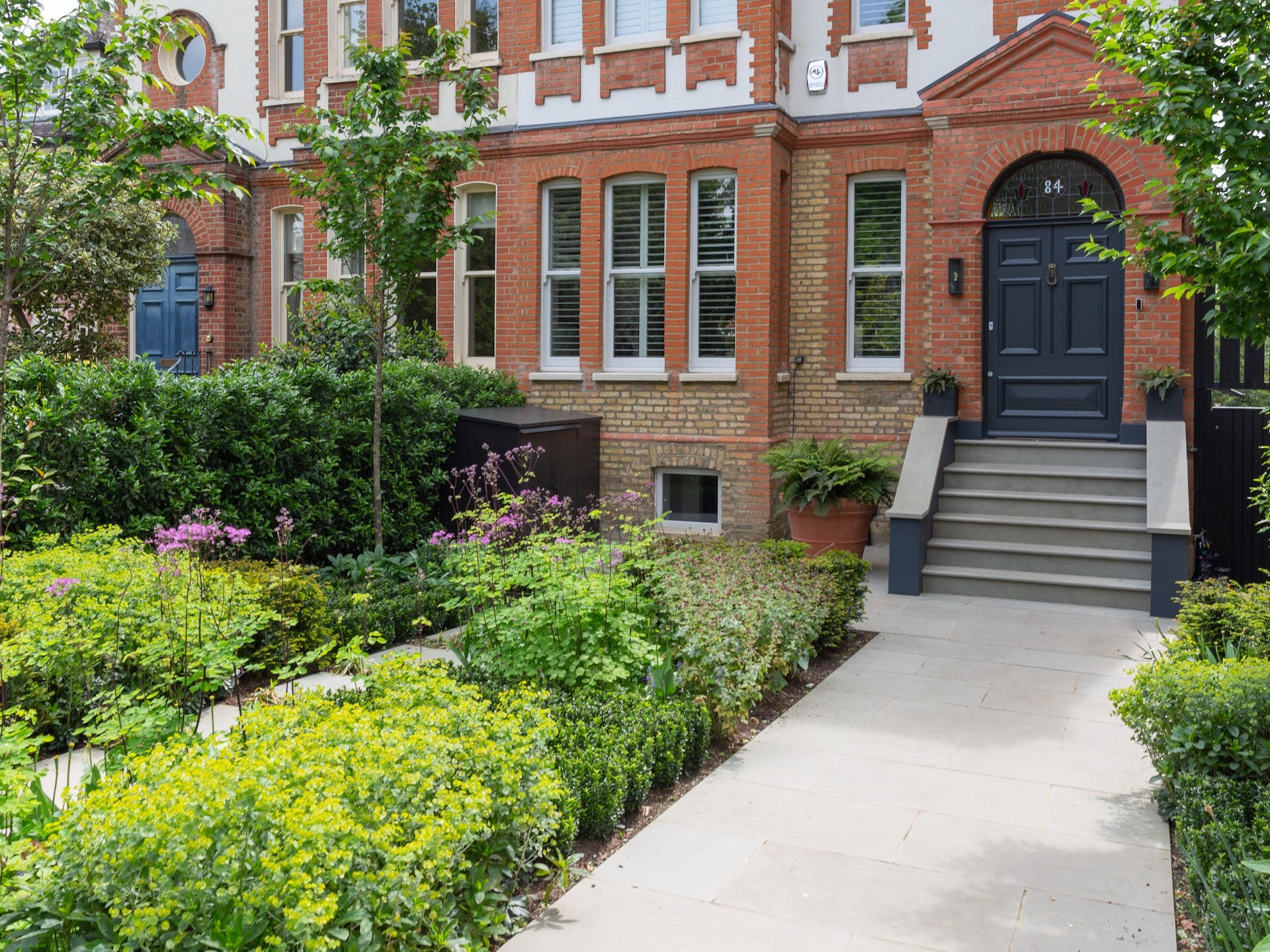
Incidentally, can you spot the bins in this garden? A sophisticated back store ensures they’re kept from view.
10. Paint a great first impression
Not all front gardens are created equal. And in some cases, you may have little to no space to play with. But if there’s no room for planting, there’s still a way to create impact – with paint.
“For example, your front door colour decision has many possibilities: ‘Do we want to blend in with the neighbours? ‘Do we want this to stamp our personal identity?” or “Do we want to hint at what may lie beyond the threshold?” Once you’ve established which camp you want to be part of, be it bold, elegant, or just empathetic to the bones of the building, there are a few timeless choices, both on trend right now and that never waver,’ says Patrick O’Donnell, Farrow & Ball Global Brand Ambassador.
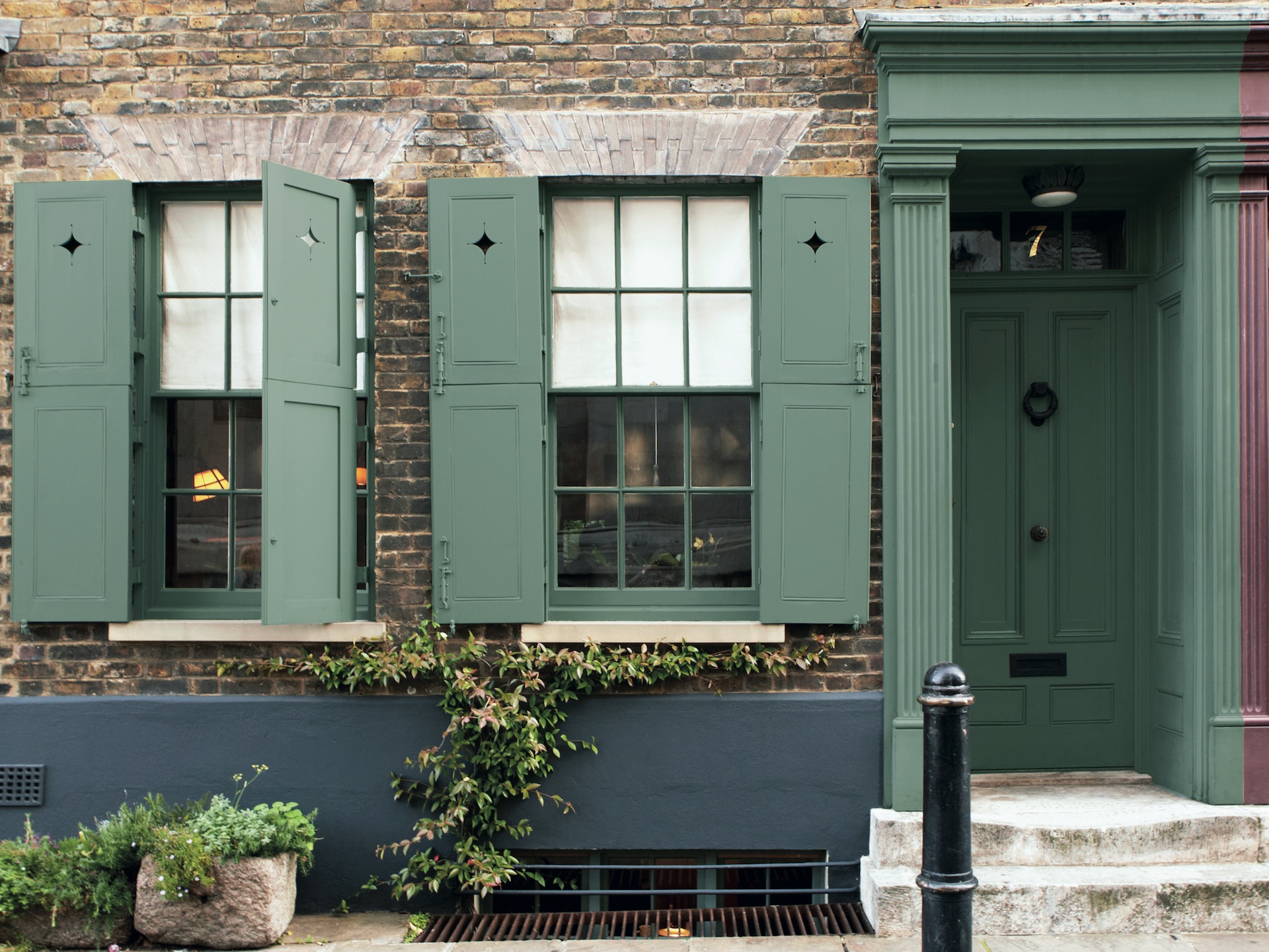
Image credit: Farrow & Ball
Here, Farrow & Ball’s Green Smoke has been used to cover the door, window frames, shutters and masonry, adding greenery where space for the real thing is limited.
11. Flank your front door
Another smart solution for a less-than spacious front garden is to ensure that greenery surrounds your front door. If this can’t be achieved with flowerbeds, don’t be afraid to use pots. “They allow you to reconfigure your front space, and make changes easily year on year,’ says Serena Fremantle at Dig. ‘Introducing symmetry is also an effective way to quickly smarten up your front garden – with a large pot for trees pruned into ‘lollipop’ shapes either side of your front door. Bay, Olive or Prunus all work well for this type of arrangement.
“A matching pair of planted containers on either side of the front door can be an easy way of boosting kerb appeal, framing the porch and giving you a warm, colourful welcome home each day,” says a spokesperson for Hillier Garden Centres. “Hydrangeas, compact roses, viburnums, Fuchsia, cupresssus ‘Goldcrest’, Lobelia, and Acer palmatum (Japanese mables) are just a few popular choices for growing in pots, but a real show stopper is the Cordyline ‘Pink Star’.
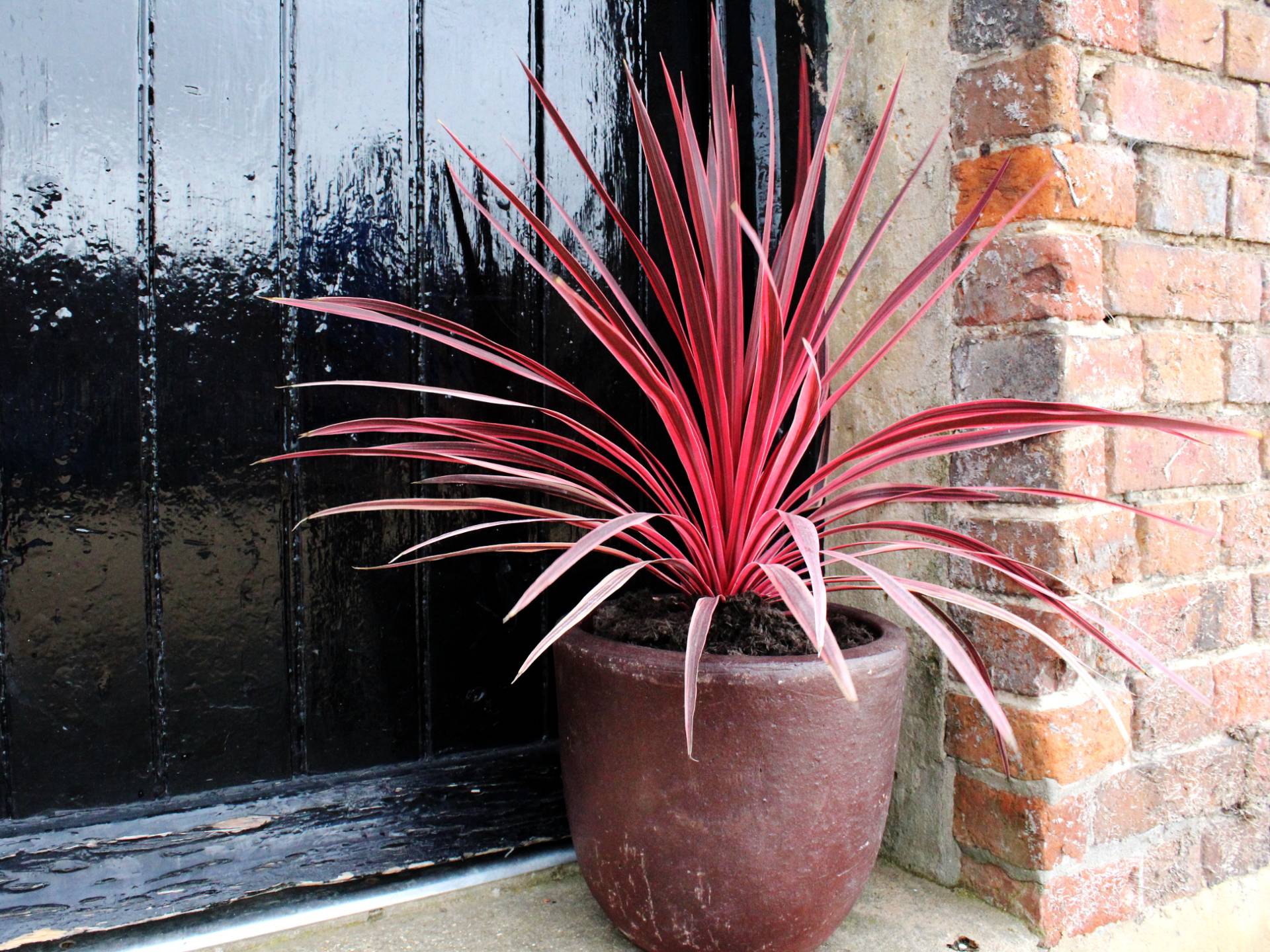
Image credit: Hillier Grden Centres
“Pink Star is a tough evergreen shrub, particularly in comparison with other pink Cordyline varieties. It gives a striking colour that does not bleach or fade in the sun and its vivid pink leaves give a bold, almost tropical look. This is a perfect plant for a container, creating dramatic interest through the height and standout colour. This is a low-maintenance plant that is proven to be quite resistant to diseases such as leaf spot, and it also has improved over-winter performance and disease resistance.”
12. Introduce colour and scent with climbers
Another way to include planting without hogging space is to consider climbers that cover your front walls. “Climbers are an excellent way of adding interest to the front of your house,” says Fabienne Maitland-Robinson, a designer at Dig. “Clematis, Wisteria and climbing roses (we like the ‘Generous Gardener’ variety) bring impact, and both colour and coverage, too.”
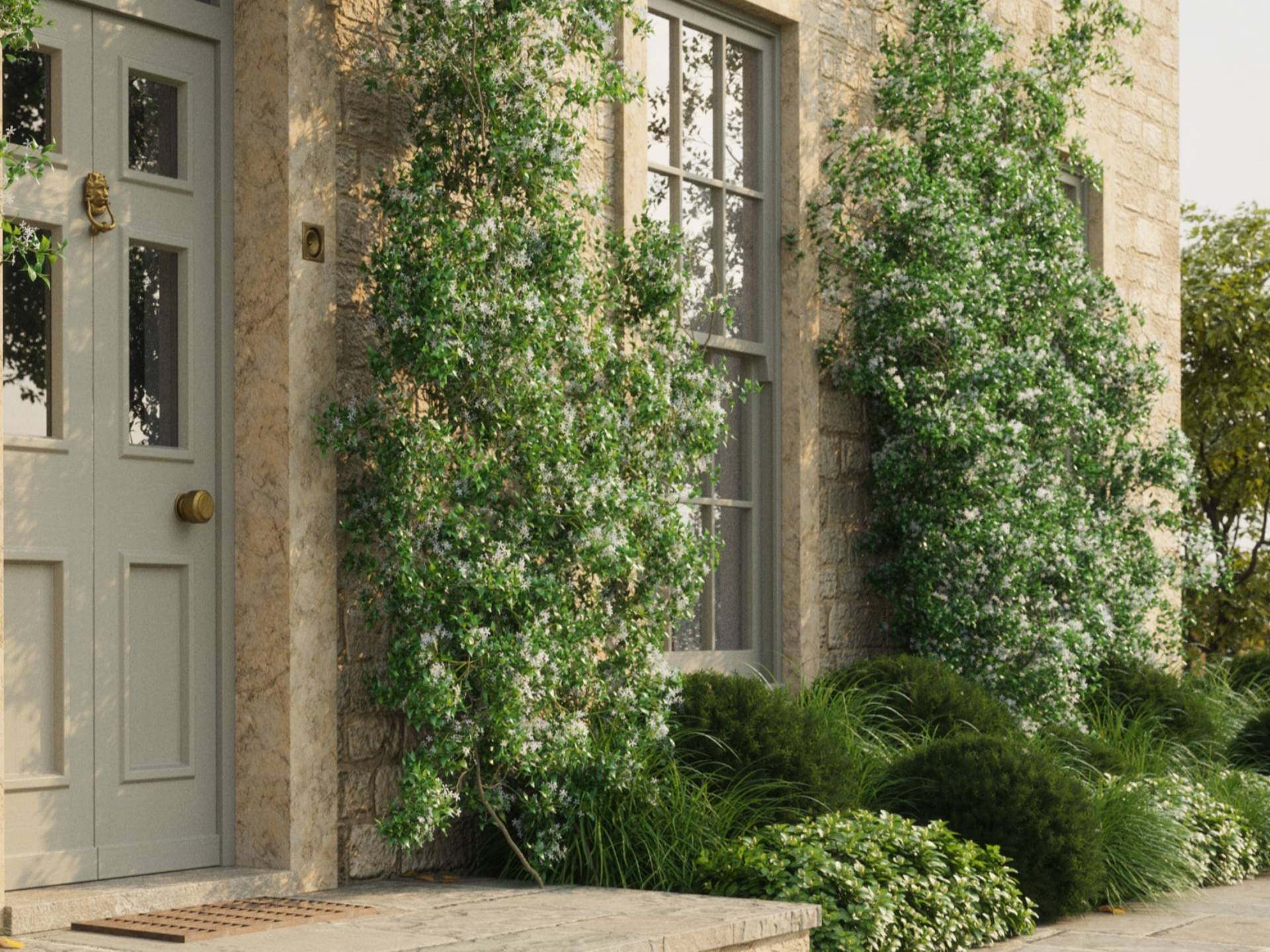
Image credit: Soto Gardens
Jasmine is another favourite for this purpose. It’s available in a variety of flower colours to complement the rest of your garden and house architecture – the paler the flower, generally the stronger the scent.
13. Add a window box
Window boxes are a brilliant way to easily and affordably bring colour and interest and can also be refreshed through the year with seasonal plants for all round impact. And if you’d prefer something more low maintenance, look to this example by Soto Gardens.
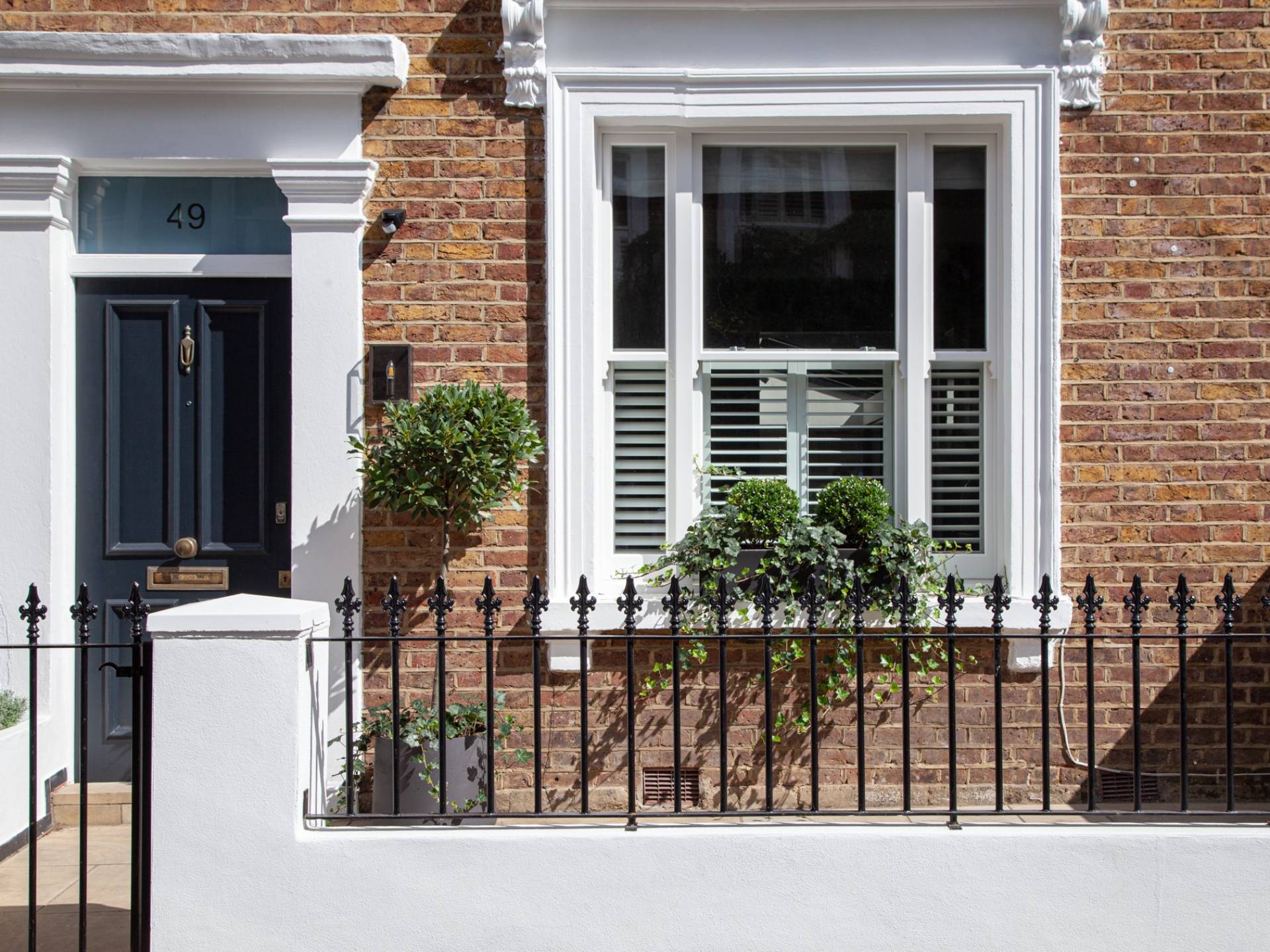
Image credit: Soto Gardens
“My top tip is keep things simple,” says Will Williams, Soto’s creative director and designer of several RHS medal-winning garden. “I see a lot of over-complication when walking through London. These spaces are supposed to complement the architecture of the property and provide subtle framing of key areas. Allow your home to be the stand out feature, keep things simple, and you can’t go wrong.”
“Our Soto Green Windowsill edit, which contains contains Ilex domes and ivy, takes away the need to know what works together and importantly we’ve considered how to make the most of your garden all year. Ivy is easily recognisable by its distinct teardrop leaf shape. Incredibly versatile, it looks beautiful trailing over the side of window boxes. The Ilex dome is great for adding evergreen structure to your outside space. It has small, dark green glossy leaves and produces small white flowers in the summer.”

